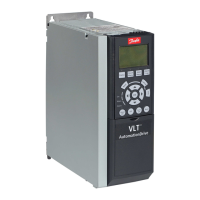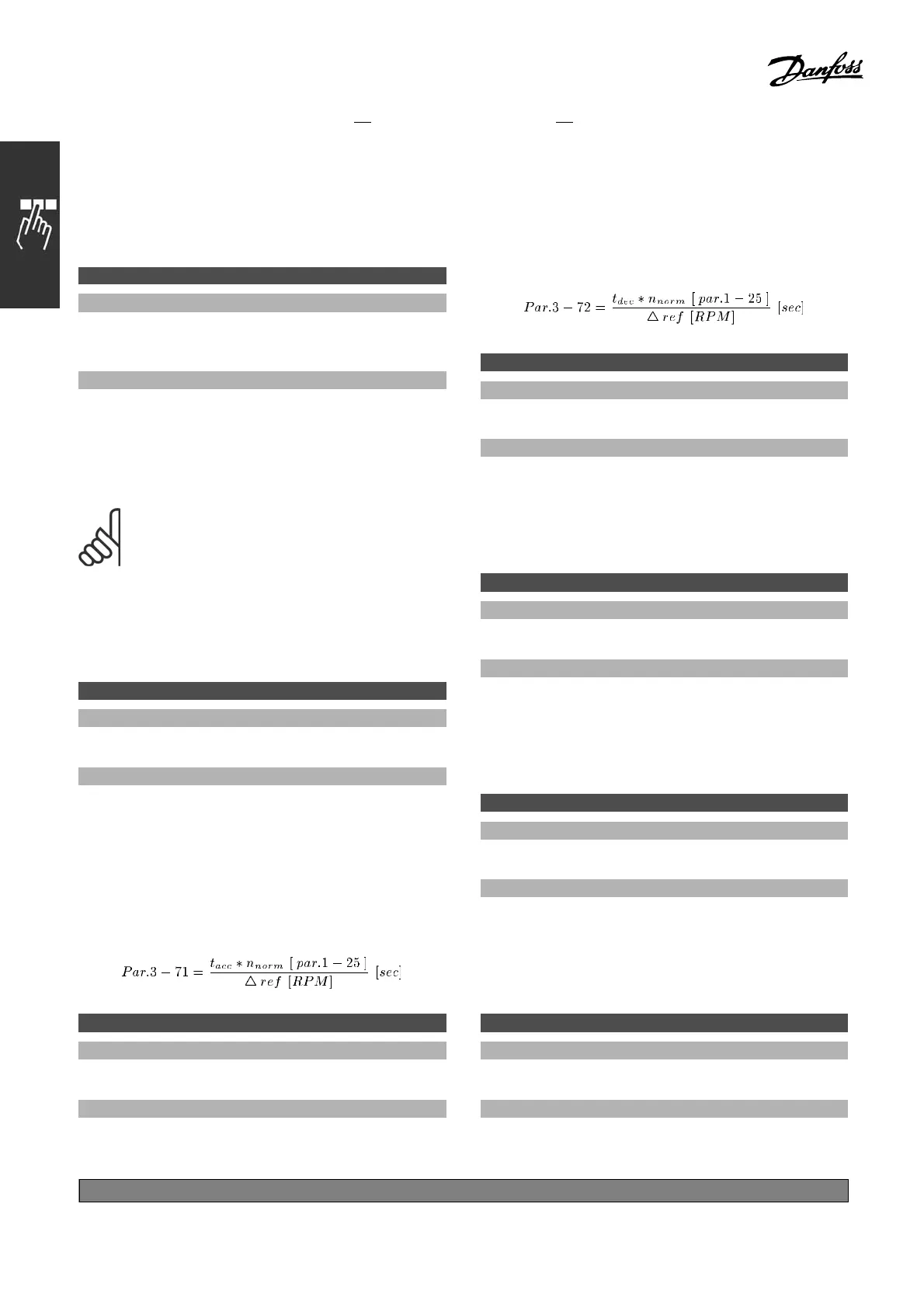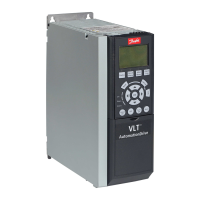FC 300 Design Guide
How to Program
greater the jerk compensation achieved, and thus
thelowerthetorquejerksintheapplication.
" 3-7* Ramp 4
Configure ramp parameters, see 3-4*.
3-70 Ramp 4 Type
Option:
*
Linear [0]
S-ramp [1]
Function:
Select the ramp type, depending on requirements
for acc eleration and deceleration. A linear ramp
will give constant acceleration during ramping.
An S-ramp will give non-linear acceleration,
compensating for jerk in the application.
NOTE
If S-ramp [1] is selected and the
reference during ramping is changed,
the ramp time may be prolonged in
order to allow jerk free movement which may
result in a longer start or stop way.
Additional adjustment of the S-ramp ratios or
switching initiators m ay be nec essary.
3-71 Ramp 4 Ramp-up Time
Range:
0.01 - 3600.00 s
*
s
Function:
Enter the ramp-up time , i.e., the acceleration
time from 0 RPM to the rated mo tor speed n
M,N
(par. 1-25). Choose a ramp-up time such that
the output current does not exceed the current
limit in par. 4-18 during ramping. The value
0.00 corresponds to 0.01 sec. in speed mode.
See ramp-down time in par. 3-72.
3-72 Ramp 4 Ramp-down Time
Range:
0.01 - 3600.00 s
*
s
Function:
Enter the ramp-down time , i.e., the deceleration
time from the rated motor speed n
M,N
(par. 1-25)
to 0 RPM. Choose a ramp-down time such that no
overvoltage arises in the inverter due to regenerative
operation o f the motor, and such that the generated
current does not exceed the current limit set in
par. 4-18. The value 0.00 corresponds to 0.01 s in
speed mod e. See ramp-up time in par. 3-71.
3-75 Ramp 4 S-ramp Ratio at Accel. Start
Range:
1-99%
*
50%
Function:
Enter the pr oportion of the total ramp-up time (par.
3-71) in which the acceleration torque increases.
The la rger the percentage value, the greater the
jerk compensation achieved, and thus the lower
the torque jerks in the application.
3-76 Ramp 4 S-ramp Ratio at Accel. End
Range:
1-99%
*
50%
Function:
Enter the pr oportion of the total ramp-up time (par.
3-71) in which the acceleration torque decreases.
The la rger the percentage value, the greater the
jerk compensation achieved, and thus the lower
the torque jerks in the application.
3-77 Ramp 4 S-ramp Ratio at Decel. Start
Range:
1-99%
*
50%
Function:
Enter the proportion of the total ramp-down time
(par. 3-72) where the deceleration torque increases.
The la rger the percentage value, the greater the
jerk compensation achieved, and thus the lower
the torque jerks in the application.
3-78 Ramp 4 S-ram p Ratio a t Decel. End
Range:
1-99%
*
50%
Function:
Enter the proportion of the total ramp-down
time (par. 3-72) where the deceleration torque
decreases. The larger the percentage value, the
*
default setting ()display text []value for use in communication via serial communication port
184
MG.33.B
6.22 - V LT is a registered Danfoss trademark

